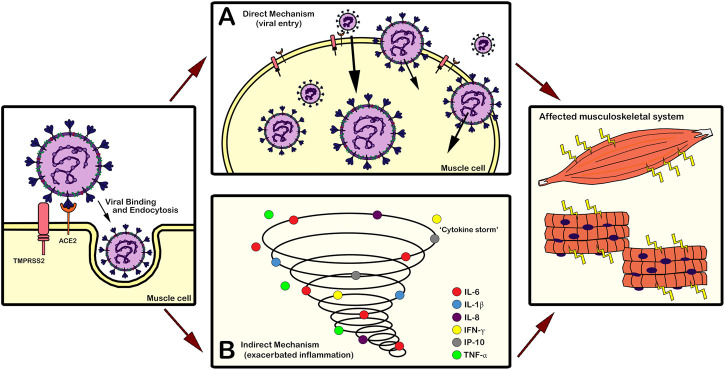FIGURE 2.
Mechanisms of action of SARS-CoV-2 on the skeletal muscle tissue. (A) Direct mechanism via SARS-CoV-2 binding to receptors on the skeletal muscle cell surface and entry of the virus into the cell. Several types of musculoskeletal cells express ACE2 and/or TMPRSS2, which allows this type of direct mechanism of action of the virus. (B) Indirect mechanism considering the adverse effects of the elevated inflammatory process (“cytokine storm”) caused by SARS-CoV-2 infection on the musculoskeletal tissue. The deregulated release of cytokines and chemokines (IL-6, IL-1β, IL-8, IFN-γ, IP-10, TNF-α) by the immune system results in exacerbated inflammation that can lead to multi-organ injuries. Both mechanisms (A,B) can affect the musculoskeletal system, causing manifestations such as fatigue and myalgia in symptomatic COVID-19 individuals. ACE2: angiotensin-converting enzyme 2; IFN-γ: interferon-gamma; IL-1β: interleukin-1β; IL-6: interleukin-6; IL-8: interleukin-8; IP-10: interferon-gamma inducible protein 10; TMPRSS2: transmembrane protease serine 2; TNF-α: tumor necrosis factor alpha.

